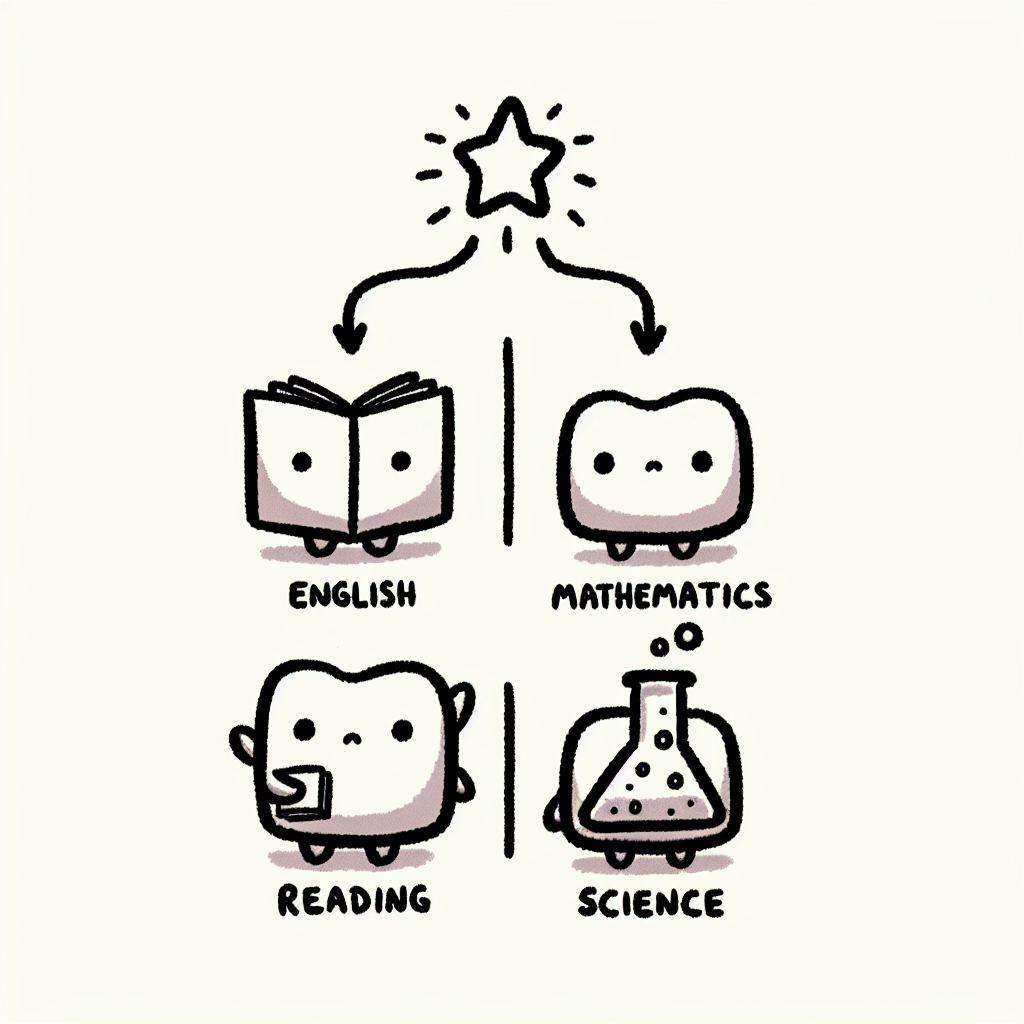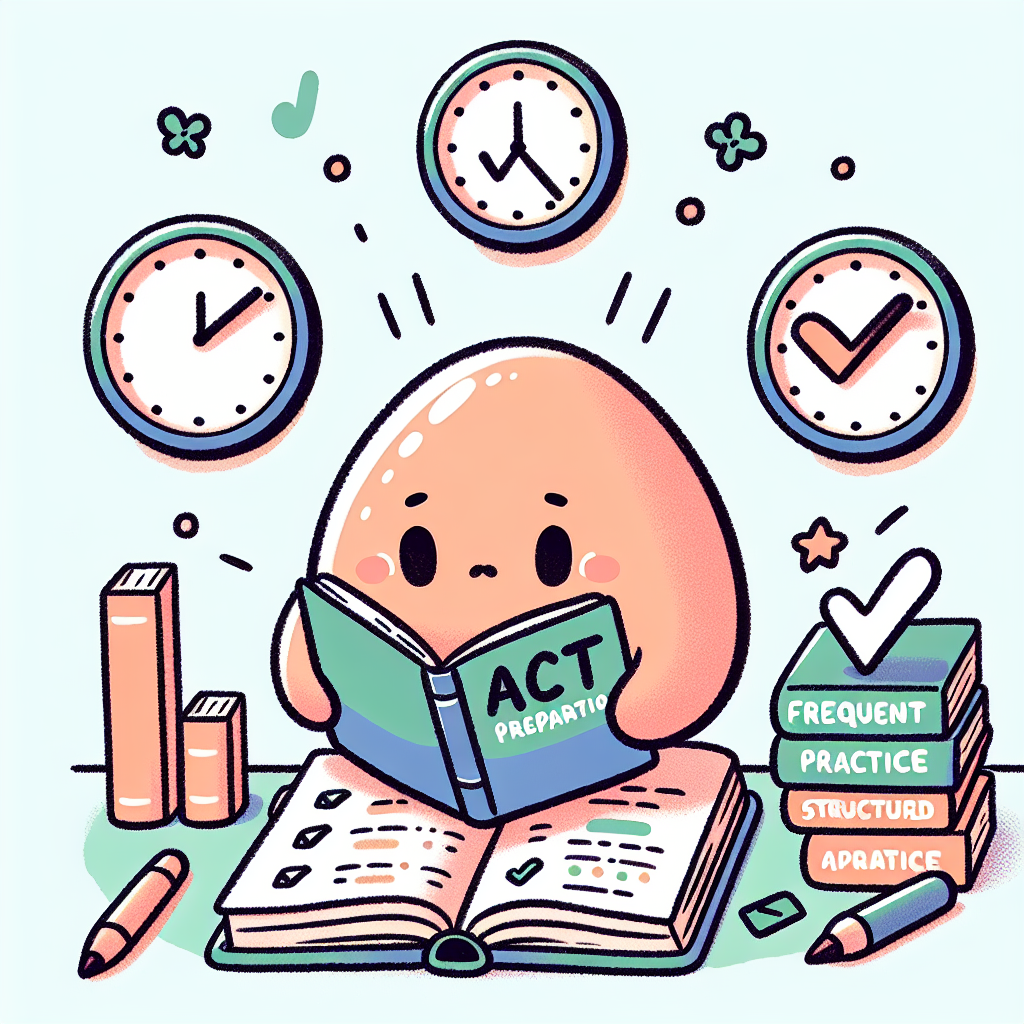Introduction to the ACT
The ACT is a standardized test used for college admissions in the United States. Administered by ACT, Inc., the test assesses high school students' academic readiness for college. It is widely accepted by U.S. colleges and universities and plays a significant role in the admissions process.
The primary purpose of the ACT is to evaluate a student's skills in key academic areas. A strong ACT score can enhance a college application, help determine course placement, and, in some cases, qualify students for scholarships. For many students, effective ACT prep can make a meaningful difference in their performance.
The ACT is often compared to the SAT, another college admissions test. While both are accepted by most colleges, they differ in format and content. The ACT includes a Science section, which the SAT does not, and generally has a faster pace. The SAT places greater emphasis on evidence-based reading and writing, while the ACT includes more straightforward questions but under tighter time constraints.
The ACT consists of four required sections and one optional section:
- English: 75 questions in 45 minutes, testing grammar, punctuation, sentence structure, and rhetorical skills.
- Mathematics: 60 questions in 60 minutes, covering algebra, geometry, trigonometry, and basic statistics.
- Reading: 40 questions in 35 minutes, assessing reading comprehension across various subject areas.
- Science: 40 questions in 35 minutes, evaluating interpretation, analysis, and problem-solving using scientific data.
- Optional Writing (Essay): 1 prompt in 40 minutes, measuring writing skills and the ability to construct a well-reasoned argument.
Understanding the ACT’s structure is the first step in effective ACT prep. Each section targets specific academic skills, and thorough preparation can help students manage the test's timing and content requirements effectively.

📊 ACT College Readiness Benchmarks
Understanding Benchmarks
ACT College Readiness Benchmarks are scores that indicate whether a student is likely to succeed in first-year college courses. These benchmarks are set for each of the ACT test subjects: English, reading, math, and science. Meeting a benchmark means a student has at least a 50% chance of earning a B or higher and a 75% chance of earning a C or higher in the corresponding college course. These benchmarks serve as a critical measure of academic preparedness and help educators, parents, and students identify areas that need improvement during ACT prep.
National Performance Trends
According to US News, only 26% of students in 2014 met all four ACT College Readiness Benchmarks. This statistic highlights a concerning gap between high school education and college-level expectations. Students who meet fewer benchmarks often face greater challenges in college, including lower retention rates and increased need for remedial coursework. For those engaged in ACT prep, understanding these trends underscores the importance of focusing on all subject areas to boost college readiness.
Benchmark Trends Over Time
From 2014 to 2022, performance on the ACT has shown a downward trend. The average composite score for the class of 2022 was 19.8, the lowest in 30 years. Several factors may have contributed to this decline, including disruptions in education due to the COVID-19 pandemic, shifts in curriculum standards, and variations in test participation rates. For students engaged in ACT prep, these trends highlight the increasing importance of targeted practice and support in all subject areas to meet or exceed the benchmarks.

The Role of ACT in Today's Admissions Landscape
The Rise of Test-Optional Policies
As of 2023, more than 1,750 colleges and universities have adopted test-optional or test-blind admissions policies. This shift means that students are not required to submit ACT scores to be considered for admission. However, the ACT still plays an important role in the admissions process for many applicants.
For students, "test-optional" does not necessarily mean "test-irrelevant." Submitting a strong ACT score can still strengthen an application, especially when other elements like GPA or extracurriculars are average. It can also be a way to stand out in competitive applicant pools or compensate for other areas of concern.
Strategically, students should consider submitting their ACT scores if they fall within or above the middle 50% range of their target schools. If scores are lower than average, it might be better to withhold them, especially if the rest of the application is strong. Understanding the admissions landscape and where a score fits in is key to making this decision.
ACT Scores at Competitive Colleges
At highly selective schools, ACT scores remain a significant factor. For example, Princeton University reports a 25th percentile ACT score of 33 and a 75th percentile score of 35. This indicates that the majority of admitted students score near the top of the ACT scale.
Applicants targeting competitive institutions should interpret their ACT score relative to these benchmarks. A score below the 25th percentile may weaken an application unless offset by exceptional achievements elsewhere. Conversely, a score at or above the 75th percentile can reinforce an applicant's academic readiness in the eyes of admissions officers.
In the current admissions climate, ACT prep remains a valuable tool—not just for test-taking success, but for making informed strategic choices about how to present one's academic profile.

How the ACT is Evolving
ACT prep has become more dynamic in recent years due to several key changes in the structure and delivery of the test. Understanding these developments is essential for students and educators adjusting their preparation strategies.
Recent ACT test changes include a shortened test duration, which reduces student fatigue and places a greater emphasis on time management. With less time for each section, ACT prep must now focus more on pacing and efficient problem-solving.
Another significant update is the introduction of an optional science section. While this gives students more flexibility in how they approach the test, it also means that ACT prep needs to be tailored to individual testing plans. Some students may choose to skip science altogether, while others may want to specialize in it to strengthen their scores.
Additionally, the ACT now offers online testing options. This shift changes the test-taking environment and impacts how practice should be conducted. ACT prep must now include familiarity with digital tools, navigation techniques, and strategies for managing screen-based reading and answering.
These changes make it clear that ACT prep is no longer one-size-fits-all. Students must adapt their preparation to align with the evolving format and delivery of the test.

📝 Effective ACT Prep Strategies
Building a Study Plan
An effective ACT prep strategy begins with a well-structured study plan. Start preparing several months in advance—ideally 3 to 6 months before your test date. This allows ample time to cover all subject areas, take multiple practice tests, and review mistakes.
Set a clear score goal based on the admission requirements of your target colleges. Use published score ranges from college websites to determine a realistic and competitive target.
Begin your prep with a diagnostic test. This initial assessment helps identify strengths and weaknesses, allowing you to focus study efforts on the areas that need the most improvement.
Subject-Specific Study Techniques
English
Focus on mastering grammar rules such as subject-verb agreement, punctuation, and sentence structure. Also, develop rhetorical skills, which include understanding the flow of ideas and author’s intent.
Practice time-saving techniques like skimming questions before reading passages and identifying common error patterns to quickly spot issues.
Math
Review key content areas including algebra, geometry, and trigonometry. Be familiar with both calculator and non-calculator question types, even though the ACT allows calculator use throughout the math section.
Use reputable practice problem sources such as official ACT prep books or websites with ACT-style questions to reinforce concepts.
Reading
Adopt active reading strategies such as annotating passages and summarizing paragraphs. Focus on identifying the main idea, analyzing the author’s tone, and making logical inferences from the text.
Regular timed practice helps build the speed and comprehension required for this section.
Science
Learn to interpret data from charts, graphs, and tables quickly and accurately. Understanding common experimental setups and scientific terminology is also important.
Practice under timed conditions to simulate real test pressure and improve pacing.
Practice and Review
Taking full-length timed practice tests is essential for building stamina and familiarity with the test format. Aim to complete several before test day.
After each test, thoroughly review mistakes to identify recurring errors or weak content areas. This targeted review leads to more efficient studying.
Use official ACT prep materials whenever possible, as they provide the most accurate representation of what to expect on test day.
Leveraging Test Prep Resources
A variety of resources are available for ACT prep, including books, online platforms, and tutoring services. Each has its advantages: books provide structured content, online platforms offer interactive tools, and tutors deliver personalized guidance.
Self-study allows for flexibility and is cost-effective, but guided instruction can offer accountability and expert feedback. Consider your learning style and budget when choosing between free and paid resources.

🎓 Special Considerations
For First-Time Test Takers
First-time ACT prep involves understanding what to expect on test day. Students should familiarize themselves with the test format, timing, and rules. Arriving early, bringing proper identification, and knowing the materials allowed in the testing room can reduce surprises and help the day run smoothly.
Managing nerves is also crucial. Practicing under timed conditions and using breathing techniques can help maintain focus. Staying positive and well-rested contributes to a better testing experience.
For Retakers
Students retaking the ACT should start by identifying what went wrong in their previous attempt. Reviewing score reports can highlight which sections need more attention in their ACT prep.
Creating a targeted improvement plan is essential. This may include adjusting study strategies, increasing time spent on weak areas, or using new prep resources.
Retakers should also consider whether to superscore. Superscoring combines the highest section scores from multiple test dates, which can benefit students who improve unevenly across subjects. Many colleges accept superscores, but it’s important to check each school’s policy.
For Students with Accommodations
ACT prep for students with disabilities includes applying for accommodations through the ACT website. The process requires documentation and approval from both the student’s school and ACT.
Available accommodations include extended time, additional breaks, alternate test formats (such as large print or braille), and testing in a separate room. Planning ahead is crucial, as approval can take several weeks.
Understanding these special considerations allows all students to prepare more effectively and approach the ACT with greater confidence.

Role of Schools and Educators
Schools and educators play a critical role in supporting students through ACT prep. By integrating ACT preparation into the curriculum, schools can provide students with consistent exposure to the test’s format and content. This can include dedicating time in English, math, reading, and science classes to practice ACT-style questions and teaching test-taking strategies.
After-school programs and workshops also offer valuable opportunities for ACT prep. These sessions can focus on targeted skill development, timed practice tests, and review of commonly tested concepts. Such programs are especially helpful for students who may not have access to private test prep resources.
Additionally, educators must provide extra support to students performing below ACT benchmark scores. This can include one-on-one tutoring, differentiated instruction, and progress monitoring to identify areas where students need the most help. Schools can also collaborate with counselors to create personalized academic plans aimed at improving test performance and college readiness.

Final Countdown: Preparing in the Last Month
In the final month of ACT prep, it's crucial to follow a structured plan that maximizes efficiency and retention. With only a few weeks left, every day counts. Here's a weekly breakdown to help students stay focused and make the most of their remaining time.
Week 1: Assess and Strategize
- Take a full-length, timed ACT practice test to establish a baseline.
- Review the results to identify strengths and weaknesses.
- Prioritize high-yield topics such as algebra, grammar rules, and reading comprehension strategies.
- Create a personalized study schedule based on your diagnostic results.
Week 2: Targeted Practice
- Focus on one or two subject areas each day, emphasizing weaker sections.
- Drill high-yield topics using official ACT materials and reputable prep books.
- Practice timing strategies, especially for the Reading and Science sections.
- Begin reviewing previous practice test mistakes to avoid repeating them.
Week 3: Intensify Review
- Take another full-length practice test under test-day conditions.
- Compare results with the first test to track progress.
- Refine strategies for pacing and question types.
- Review test-taking strategies, such as process of elimination and educated guessing.
Week 4: Final Tune-Up
- Take one final full-length practice test early in the week.
- Focus on light review and confidence-building activities.
- Get adequate sleep and maintain a healthy routine.
- Avoid cramming; instead, revisit high-yield topics and review flashcards or notes.
Prioritizing full-length practice tests and focused review of high-yield topics during this final month of ACT prep can lead to meaningful improvements in performance. Staying consistent and intentional with your study plan will help ensure you're ready on test day.

Conclusion: Mastering the ACT for College Success
ACT prep continues to play a crucial role in the college admissions process. While some institutions have adopted test-optional policies, many still consider ACT scores as a strong indicator of academic readiness. For students aiming to strengthen their applications, a solid ACT prep plan can make a measurable difference.
Effective preparation involves consistent practice, familiarity with the test format, and targeted strategies to address individual weaknesses. With the right tools and commitment, students can improve their ACT scores and enhance their chances of admission to competitive colleges.
It is also important to stay current with any changes in ACT testing policies or college requirements. By staying informed and adapting your ACT prep accordingly, you can ensure that your efforts remain aligned with the latest expectations and opportunities in higher education.

📚 References & Resources
For students and educators focused on effective ACT prep, staying informed through credible sources is essential. The following resources offer valuable insights into ACT benchmarks, score trends, and testing policies:
- ACT College Readiness Benchmarks (US News): This article outlines how students are performing relative to ACT's college readiness standards, helping guide prep strategies.
- ACT Score Decline - 2022 (US News): Learn about the national decline in ACT scores and what it means for students preparing for future exams.
- Test-Optional Admissions (US News): Understand how changing college admissions policies are affecting the role of ACT prep in the application process.
- ACT Score Ranges at Top Schools (US News): This resource provides context on competitive ACT score ranges, helping students set realistic prep goals.
- Upcoming ACT Changes (US News): Stay updated on changes to the ACT that may affect prep strategies and testing formats.














